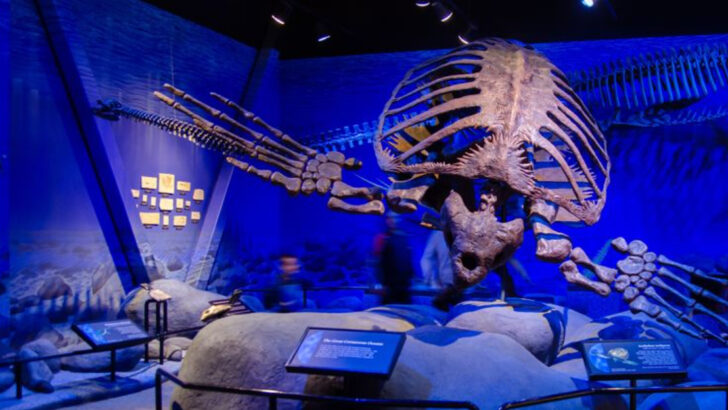Imagine a turtle so massive, it could have easily swallowed a car whole. Welcome to the world of the largest prehistoric turtle, a creature that roamed the Earth over 80 million years ago, leaving behind a legacy that still boggles scientists today.
This ancient titan wasn’t your average slow-moving shell-dweller. With its size and power, it dominated the seas, leaving us in awe of its sheer scale and the mysteries it holds.
Get ready to be amazed by facts that will make you rethink everything you thought you knew about turtles. From its staggering size to its untold secrets, this prehistoric giant was a marvel of nature.
If you thought turtles were just cute and slow, think again—this colossal creature will leave you stunned and eager to learn more!
The Name of the Giant
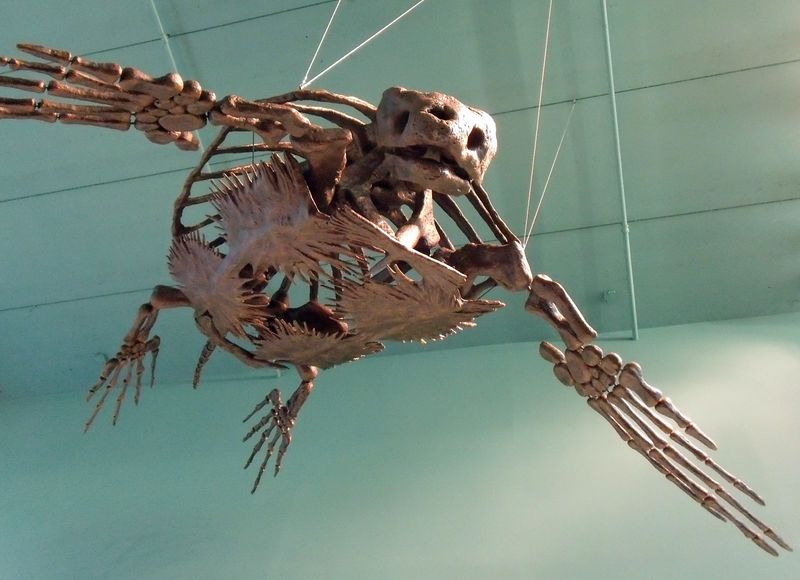
The largest prehistoric turtle known to mankind is called Archelon. This awe-inspiring creature swam the oceans during the late Cretaceous period, and its name means “ruler turtle.” Archelon was a fitting title for such a formidable beast. Weighing in at over 2 tons and measuring up to 13 feet long, this turtle was a giant in its time. Its enormous size helped Archelon to dominate its environment, from the warm shallow seas to deeper waters. When discussing prehistoric turtles, Archelon’s name stands out as a symbol of ancient marine supremacy.
Record-Breaking Size
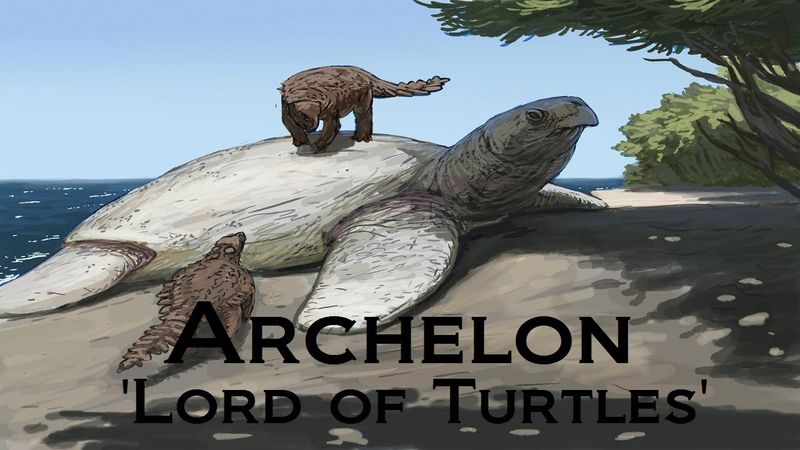
Archelon’s size was extraordinary, surpassing any modern turtle. Its shell alone stretched over 13 feet, while its flippers extended like wings to aid in swimming. Imagine a turtle with a body so large it rivaled a small car! This massive size provided several advantages, such as deterring predators and covering vast distances in search of food. Archelon’s impressive dimensions made it a dominant force in its marine ecosystem. Even today, the scale of this prehistoric turtle captivates scientists and enthusiasts alike, as they marvel at its unparalleled size and grandeur.
The Unique Shell Structure
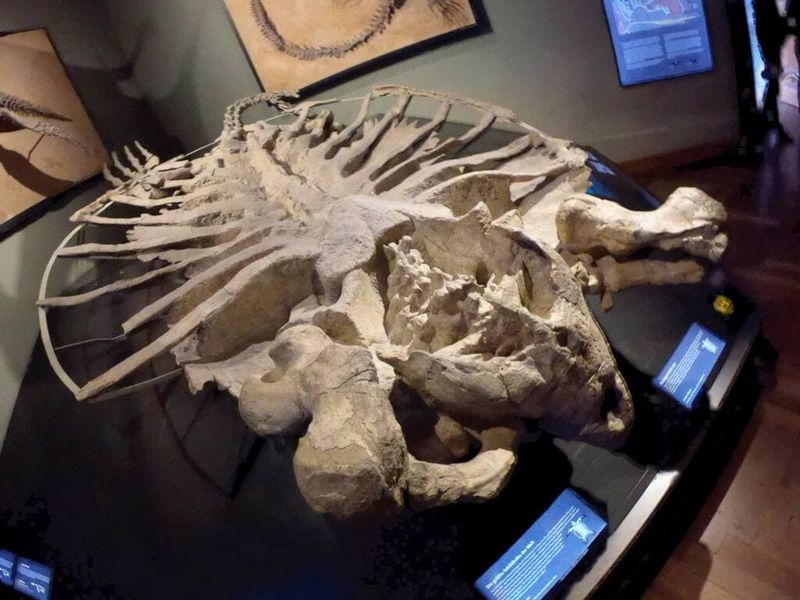
Unlike modern turtles, Archelon’s shell was not hard but had a leathery texture. This unique feature was crucial for its survival in the prehistoric oceans. The shell’s ribbed structure allowed flexibility, making it easier for Archelon to maneuver through the water. This adaptability was essential for a creature of its size, enabling it to navigate diverse marine environments with ease. The shell’s design also served as protection against powerful predators. Archelon’s shell remains a subject of study, offering insights into evolutionary adaptations that allowed it to thrive in ancient seas.
Diet and Feeding Habits
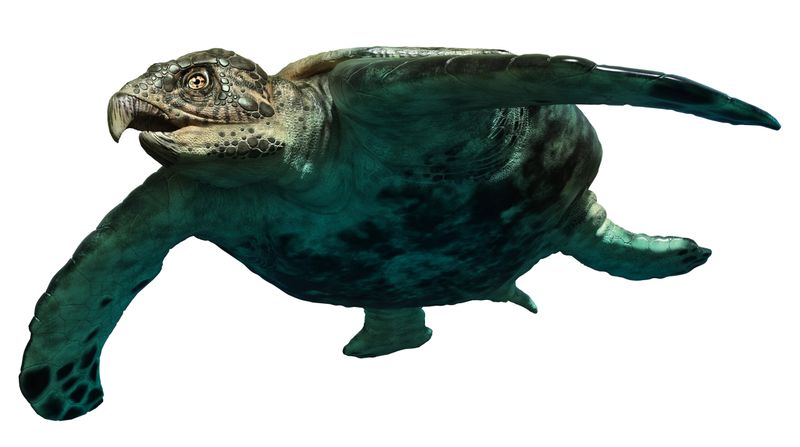
Archelon was an adept feeder, with a diet that included jellyfish, soft-bodied marine creatures, and vegetation. Its strong beak was perfect for tearing into its prey, allowing it to consume a wide range of foods available in its environment. The turtle’s feeding habits played a significant role in its ability to grow to such a remarkable size. By consuming large quantities of food, Archelon sustained its massive body and maintained energy levels necessary for long migrations. Understanding Archelon’s diet provides valuable information about the marine ecosystems of the late Cretaceous period.
Habitat and Distribution
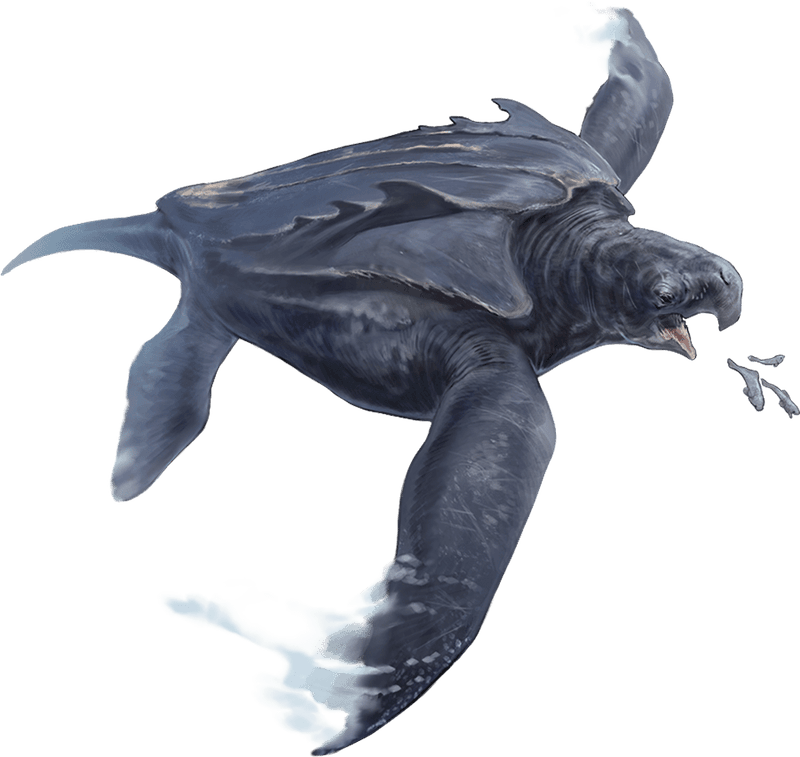
Archelon thrived in the warm, shallow seas that covered much of North America during the late Cretaceous period. Fossil evidence suggests it inhabited areas that are now part of the Great Plains, Gulf Coast, and Western Interior Seaway. These regions provided an ideal habitat, rich in food sources and safe nesting grounds. Archelon’s widespread distribution allowed it to explore various marine environments, from coastal areas to open seas. This adaptability highlights its evolutionary success. Today, fossils of this giant turtle offer insights into the shifting landscapes and climates of ancient Earth.
Fossil Discoveries
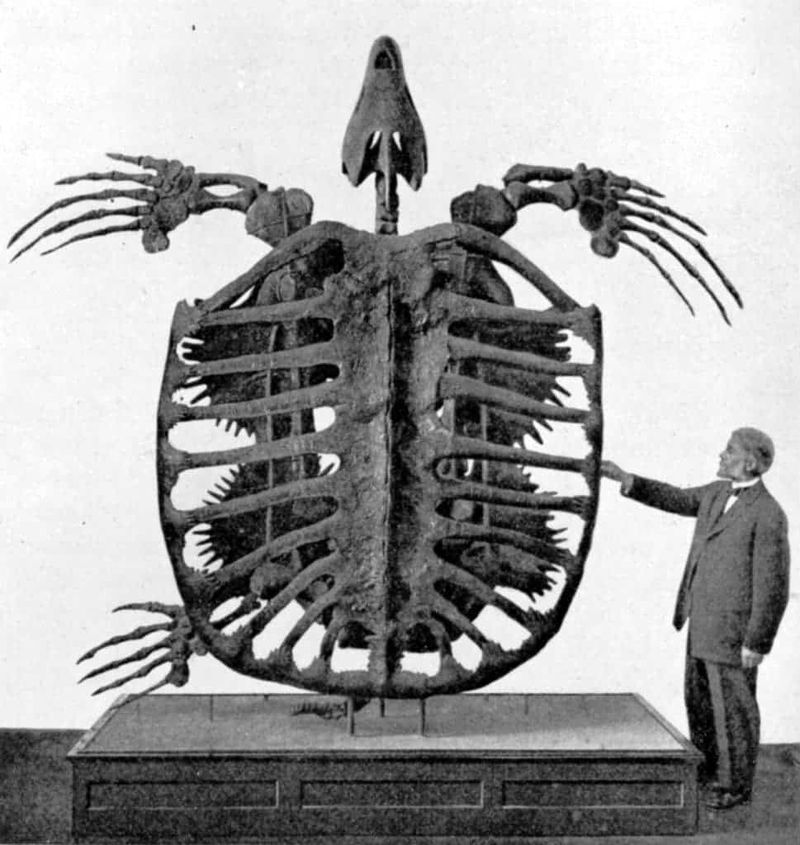
The discovery of Archelon fossils has been instrumental in understanding this prehistoric giant. First unearthed in the 19th century, these fossils have provided a wealth of information about the turtle’s anatomy and lifestyle. Paleontologists have uncovered remains in various locations, painting a detailed picture of Archelon’s existence. Each fossil find contributes to our knowledge of its physical characteristics and the environments it inhabited. These discoveries continue to captivate scientists and the public, offering a tangible connection to the distant past and shedding light on the rich diversity of prehistoric life.
Comparison with Modern Turtles
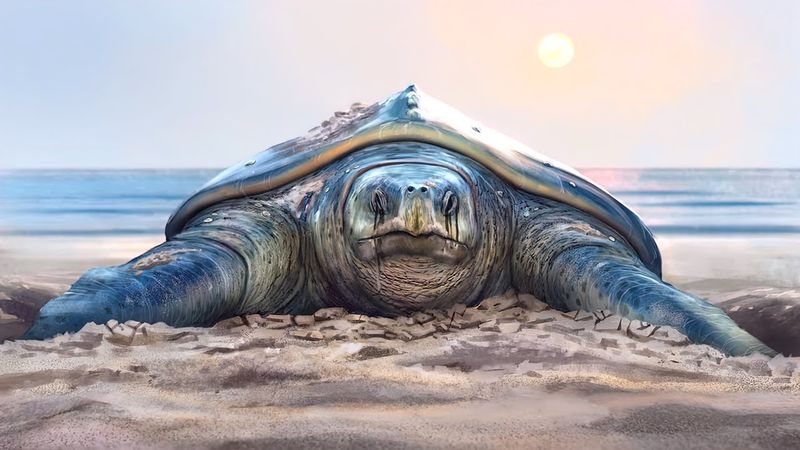
Archelon’s comparison with modern turtles reveals fascinating differences and similarities. While both belong to the same order, their physical attributes diverge significantly. Archelon was much larger, with a flexible shell and elongated flippers. In contrast, modern sea turtles have hard shells and more compact bodies. Despite these differences, some traits have persisted through millennia, such as the aquatic lifestyle and diet preferences. Studying these similarities and differences provides insights into the evolutionary pressures that shaped both ancient and modern turtles. The legacy of Archelon continues to influence our understanding of turtle evolution.
Mysterious Extinction

The extinction of Archelon remains a mystery, with several theories proposed. Changes in sea levels and climate likely played a role, altering the habitats and food sources Archelon depended on. Increasing competition with other marine predators might have also contributed to its decline. These factors combined to create an environment that was increasingly hostile to such large creatures. The reasons behind Archelon’s disappearance continue to intrigue scientists, as they piece together clues about the challenges faced by prehistoric life. Understanding these factors helps us grasp the dynamics of ancient extinction events.
Archelon’s Role in Culture
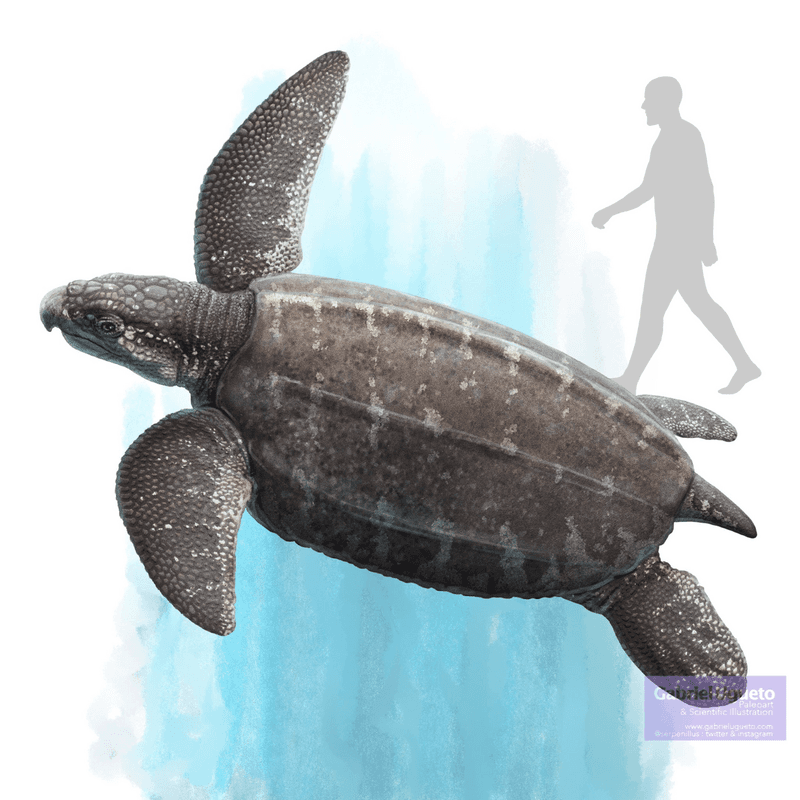
Archelon has left a lasting impression on human culture, inspiring myths and legends about giant turtles. These stories often depicted turtles as powerful beings, symbolizing strength and longevity. The awe-inspiring size of Archelon fueled imaginations, leading to its inclusion in various cultural narratives. Its legacy is evident in maritime folklore, where tales of mysterious sea creatures abound. The enduring fascination with giant turtles reflects humanity’s deep connection with the natural world and our desire to understand its mysteries. Archelon’s cultural impact is a testament to its impressive presence in prehistoric oceans.
Archelon in Popular Media
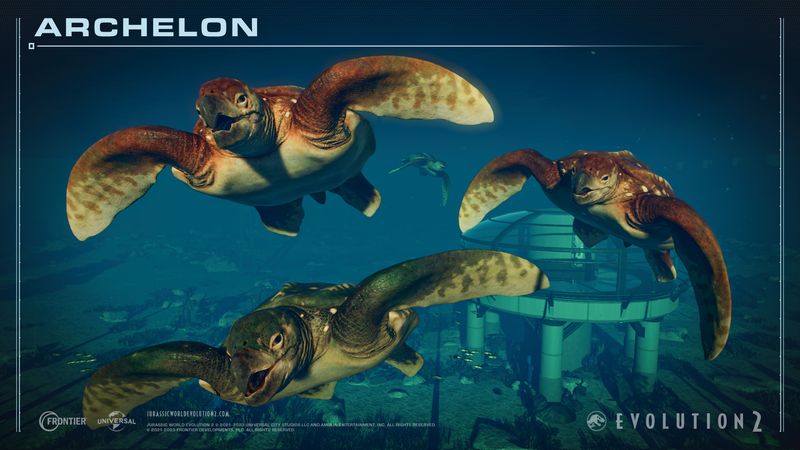
Archelon has captured the imagination of filmmakers and documentarians, appearing in movies and TV shows that explore prehistoric life. Its immense size and unique features make it an ideal subject for captivating visual storytelling. Whether through realistic CGI or dramatic reenactments, Archelon’s presence in media brings the ancient world to life, allowing audiences to experience the awe of encountering such a giant. These portrayals educate and entertain, sparking interest in paleontology and the mysteries of prehistoric creatures. Archelon’s appearances in popular media continue to inspire curiosity about our planet’s distant past.
Evolutionary Significance
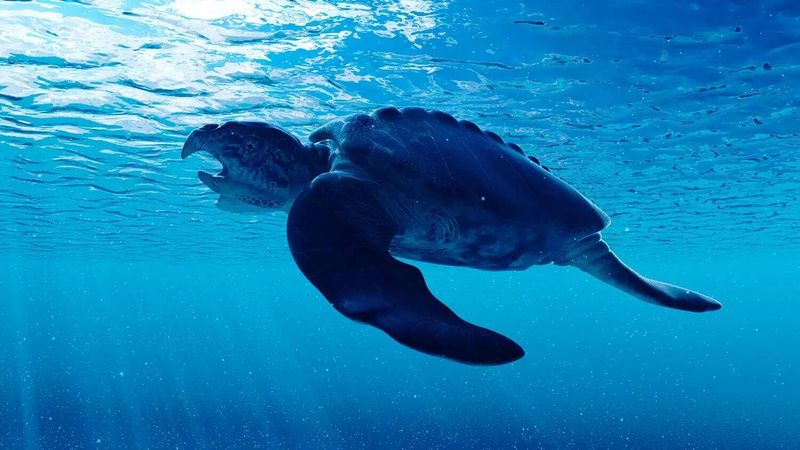
Archelon holds a significant place in the evolutionary history of turtles. As one of the largest known species, it provides a unique perspective on the adaptive strategies that contributed to turtle evolution. Archelon’s physical traits, such as its flexible shell and large flippers, highlight the diversity and adaptability within the turtle lineage. Studying Archelon’s evolutionary path offers insights into the environmental pressures that shaped these ancient reptiles. By examining its role in the broader context of turtle evolution, scientists gain a deeper understanding of how modern turtles came to be and the challenges they faced.
Archelon’s Predators
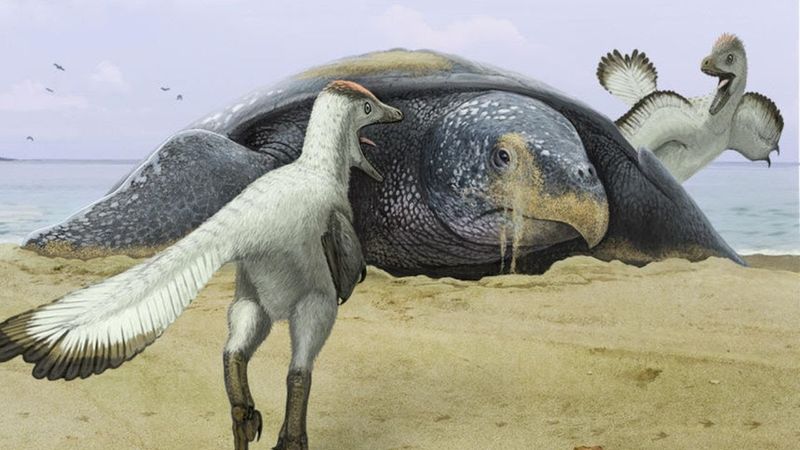
Despite its size, Archelon faced threats from formidable predators like mosasaurs and large sharks. These apex predators roamed the same waters, creating a dynamic ecosystem where survival was a constant battle. Archelon’s size and shell provided some protection, but it was not invincible. The interactions between Archelon and its predators offer a glimpse into the harsh realities of prehistoric marine life. Understanding these predator-prey relationships sheds light on the ecological balance of the time, helping us appreciate the complexity and diversity of ancient ocean ecosystems. These interactions were crucial for Archelon’s adaptation and survival.
Archelon’s Reproductive Habits
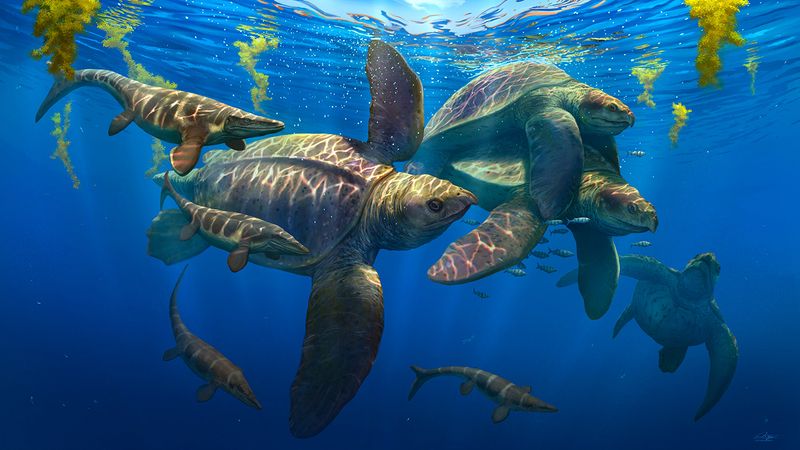
Archelon’s reproductive habits were crucial to its survival. Like modern sea turtles, Archelon likely laid eggs on sandy beaches, returning to the sea after nesting. This behavior ensured the continuation of its species despite numerous challenges. The selection of safe nesting sites was pivotal, as young hatchlings faced threats from predators and environmental hazards. Archelon’s nesting strategies offer insights into the reproductive adaptations of ancient turtles, highlighting the continuity of certain behaviors over millions of years. Studying these habits helps us understand the life cycle and survival strategies of prehistoric turtles.
Archelon’s Lifespan
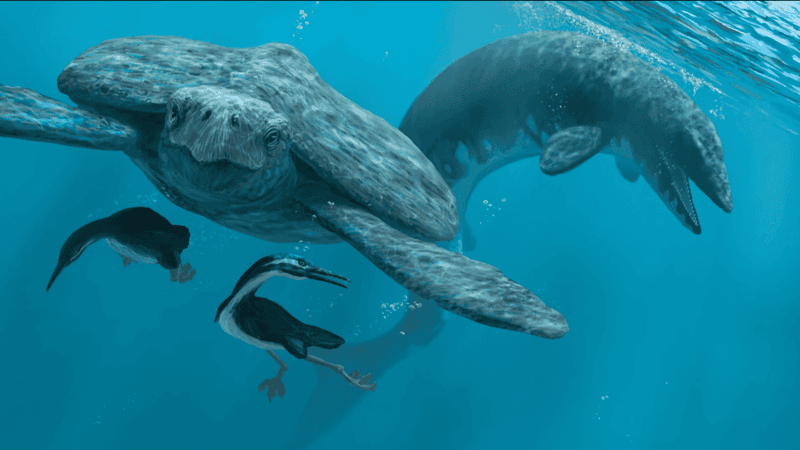
The lifespan of Archelon was likely extensive, with some estimates suggesting it lived for several decades. This long life was essential for reaching its enormous size and reproductive maturity. The turtle’s growth and development were influenced by various factors, including diet, environmental conditions, and predator pressures. Archelon’s long lifespan allowed it to adapt and thrive in changing prehistoric oceans. Understanding its life cycle provides insights into the longevity and resilience of ancient marine reptiles. These aspects of Archelon’s biology contribute to our knowledge of the evolutionary strategies that enabled its success.
Archelon’s Skeleton
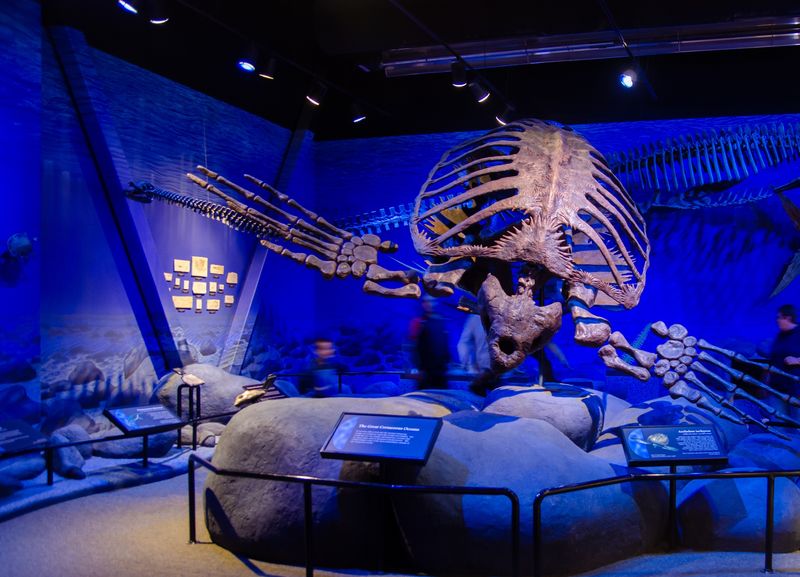
Archelon’s skeleton is a marvel of prehistoric engineering. Its massive ribcage provided structural support, while elongated flippers were adapted for efficient swimming. The skeletal structure reveals much about the turtle’s lifestyle and environmental adaptations. Archelon’s bones were robust, aiding in buoyancy and stability in water. The study of its skeleton continues to fascinate paleontologists, offering clues about its movement, feeding habits, and overall biology. By examining Archelon’s skeletal remains, scientists gain valuable insights into the anatomical innovations that allowed this giant turtle to navigate the ancient seas successfully.
Archelon’s Place in the Ecosystem
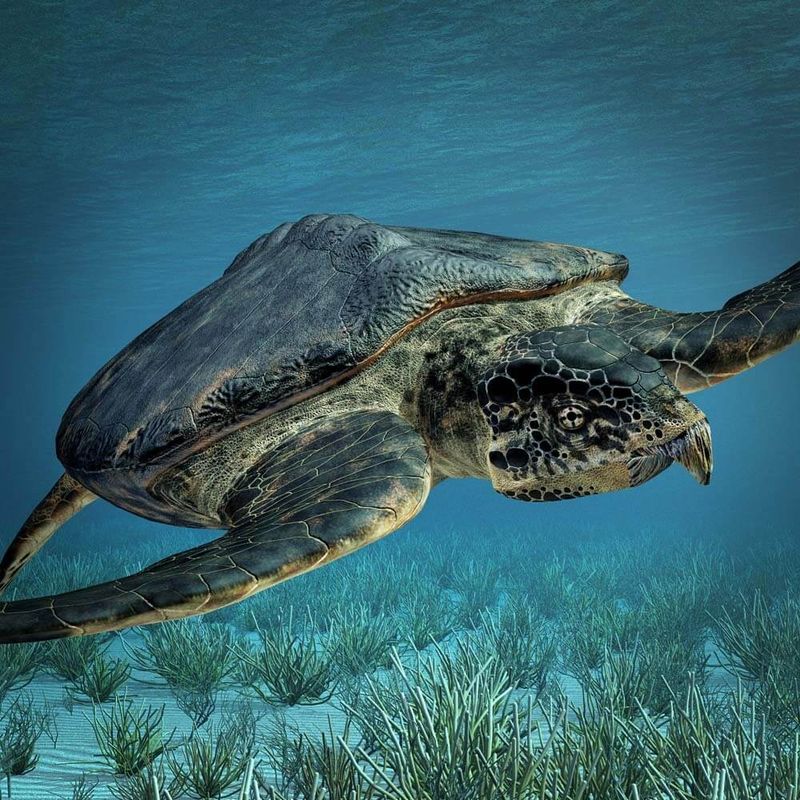
Archelon played a vital role in its ecosystem, interacting with a variety of marine species. As a large herbivore and occasional predator, it influenced the distribution and abundance of marine life. Archelon’s diet and behavior impacted the food web, contributing to the balance of its environment. Its presence was essential for nutrient cycling and energy flow within the ecosystem. Understanding Archelon’s ecological role provides a broader perspective on the dynamics of prehistoric marine communities. These interactions highlight the interconnectedness of life and the importance of each species in maintaining ecosystem stability.
Archelon’s Legacy
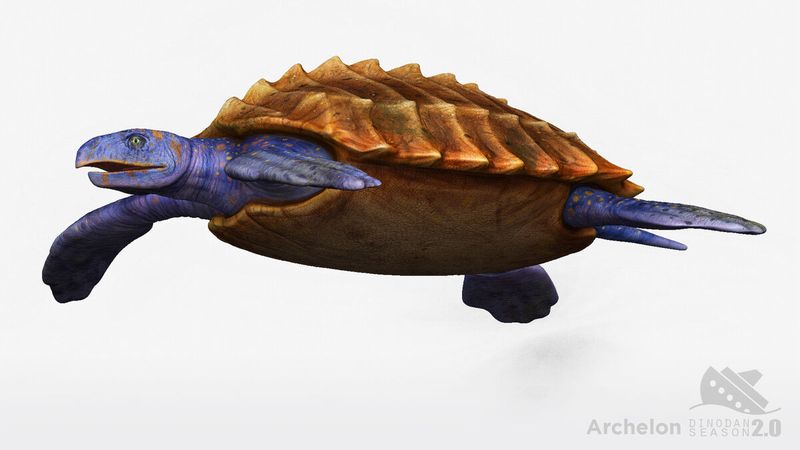
Archelon’s legacy lives on in the form of modern sea turtles, which continue to inhabit the world’s oceans. While vastly different in size, today’s turtles share many traits with their prehistoric ancestor, such as aquatic adaptations and a similar body structure. The study of Archelon provides a window into the evolutionary history of turtles, offering lessons about adaptation and survival. Archelon’s story reminds us of the enduring impact of ancient species on contemporary life. Its legacy is a testament to the resilience of nature and the ongoing evolution of marine reptiles.

